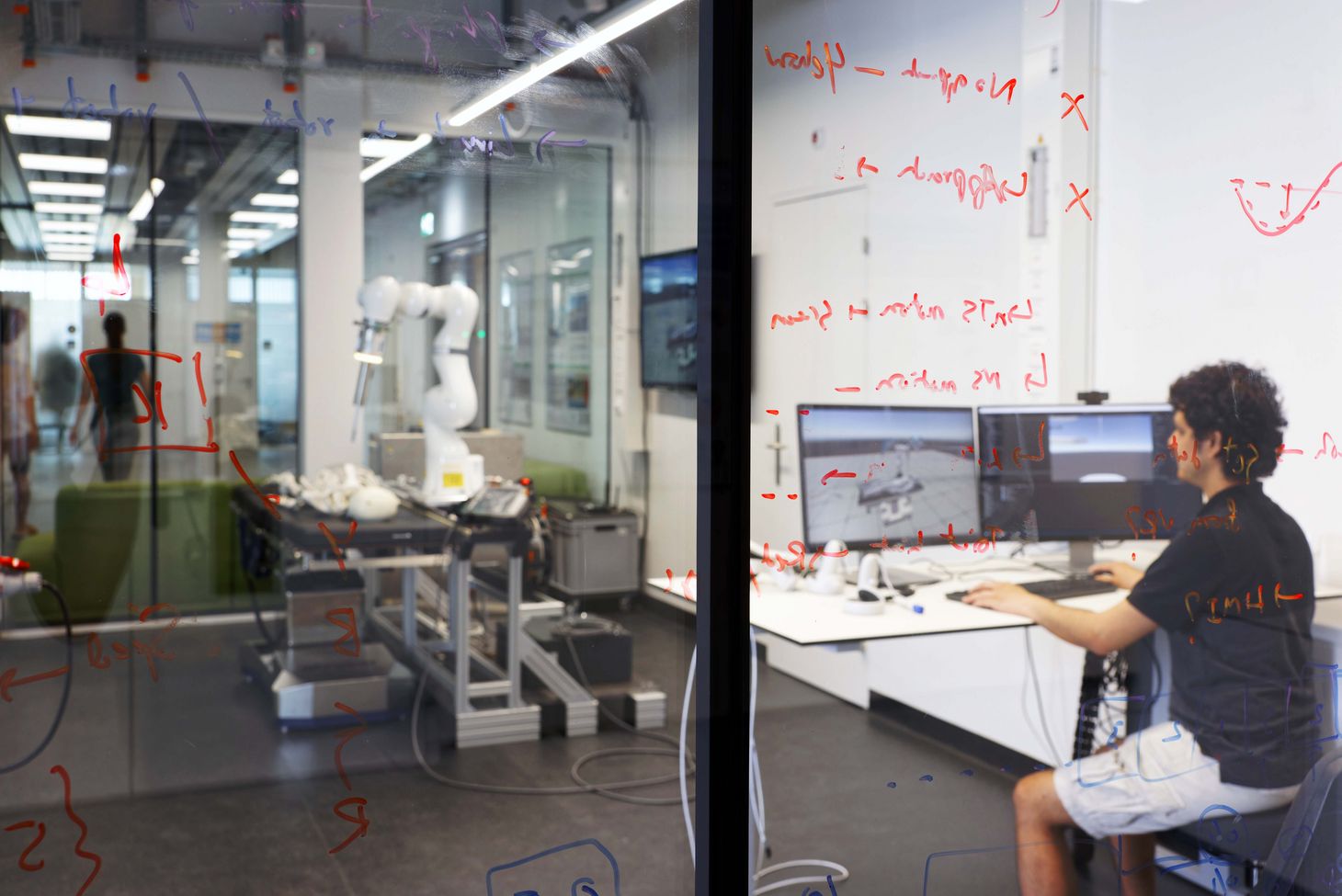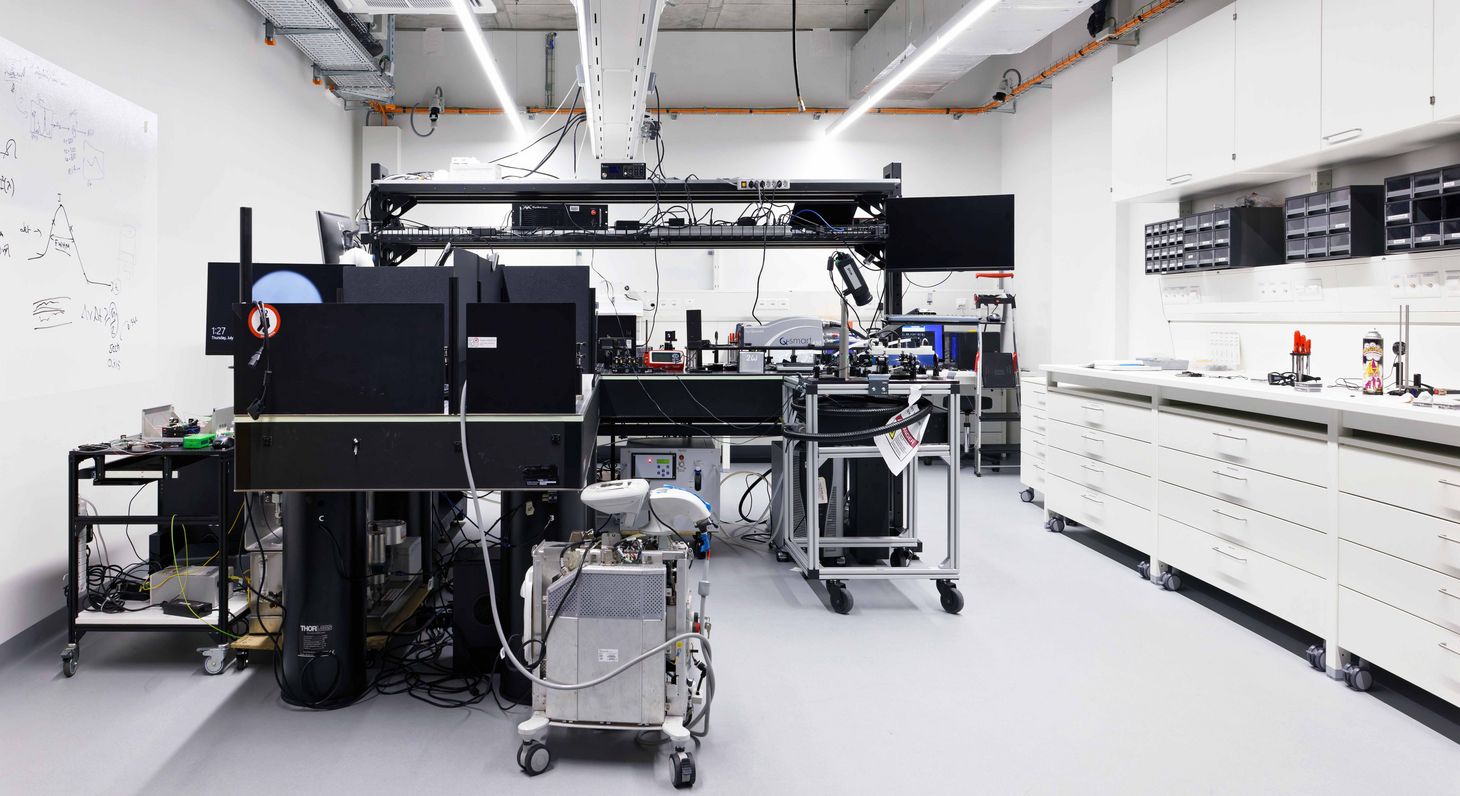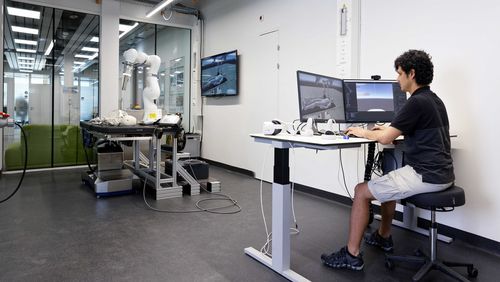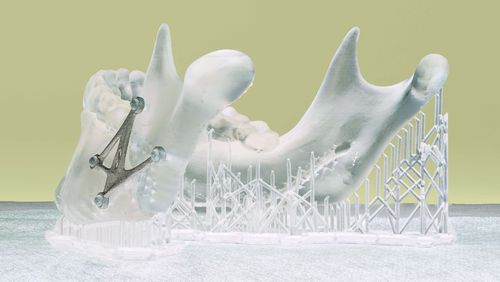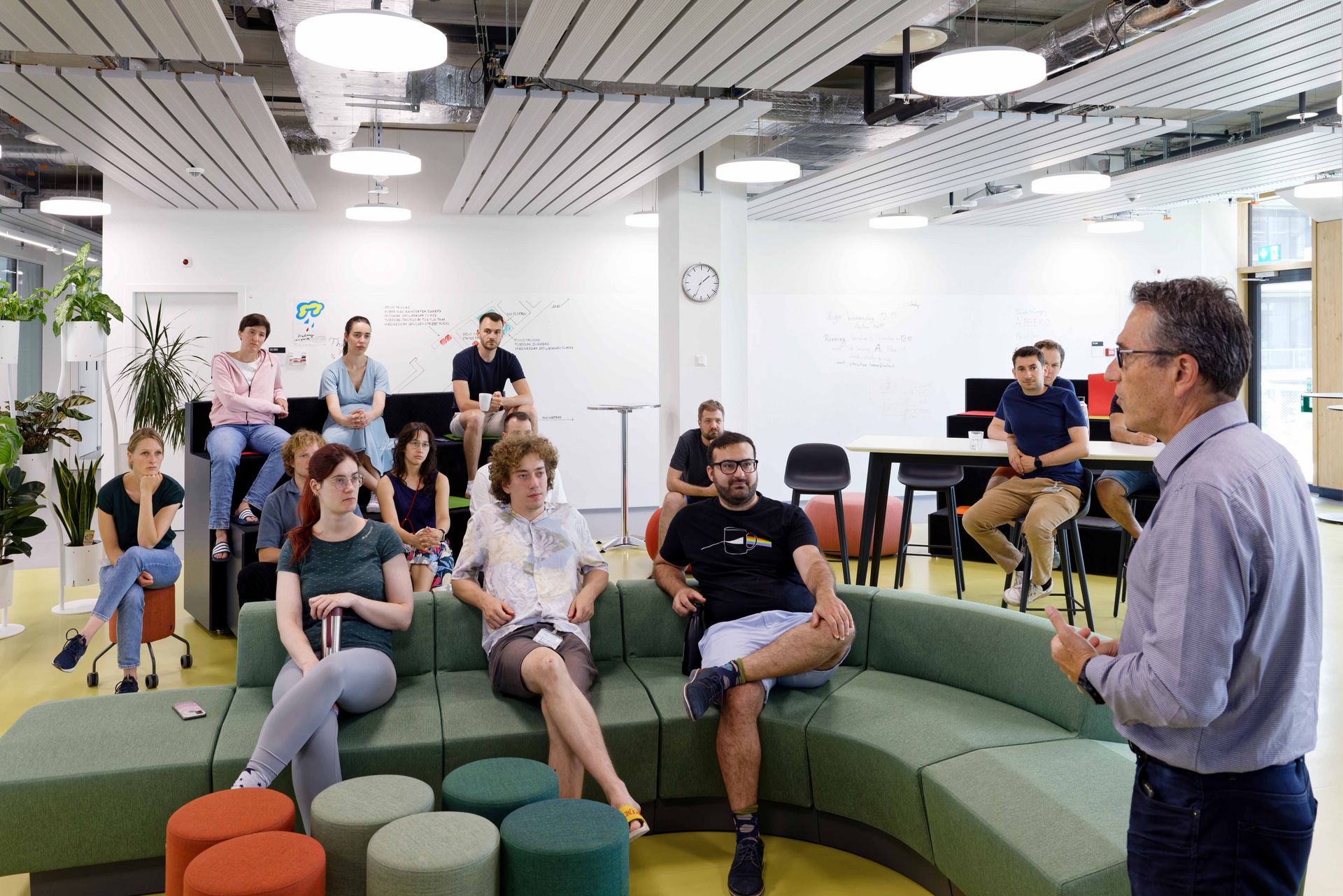
Miracle-making encounters
In the spring of 2023, the MIRACLE II project at the University of Basel—which receives funding from the Werner Siemens Foundation—moved to new facilities. The new location has more space, and it fosters exchange among researchers.
Researchers need time and space to develop their ideas, but also proximity to colleagues and collaborators. That was the principle guiding Philippe Cattin, research leader of the MIRACLE II project, when planning the new facilities for the Department of Biomedical Engineering at the University of Basel. Housed in a new building designed by star architects Herzog & de Meuron, the department’s labs, offices, meeting rooms and lecture theatres are located at the Life Science Campus in Allschwil, near Basel. With a total floor area of 5000 square metres (compared to 3000 at the previous location just a few hundred metres away), the new facilities are considerably larger.
Philippe Cattin explains the significance of proximity in the department’s lounge, an inviting modern space with an open-plan kitchen where four students are currently deep in conversation. There are sofas, tables of various sizes, and even a foosball table. “The lounge is the most important room in the department,” says Cattin. Indeed, he pushed for every possible square metre with the interior designers, because such meeting places are a breeding ground for new ideas. “Innovation thrives at points of friction—places where people meet and speak to each other,” he says.
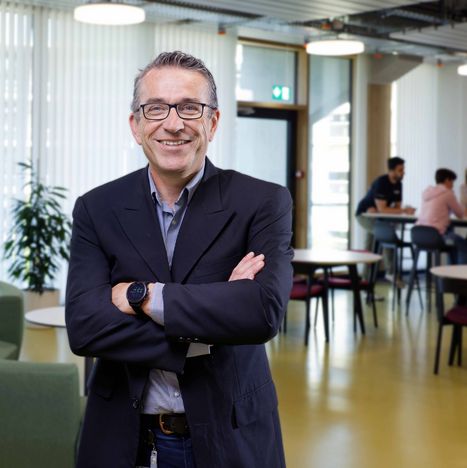
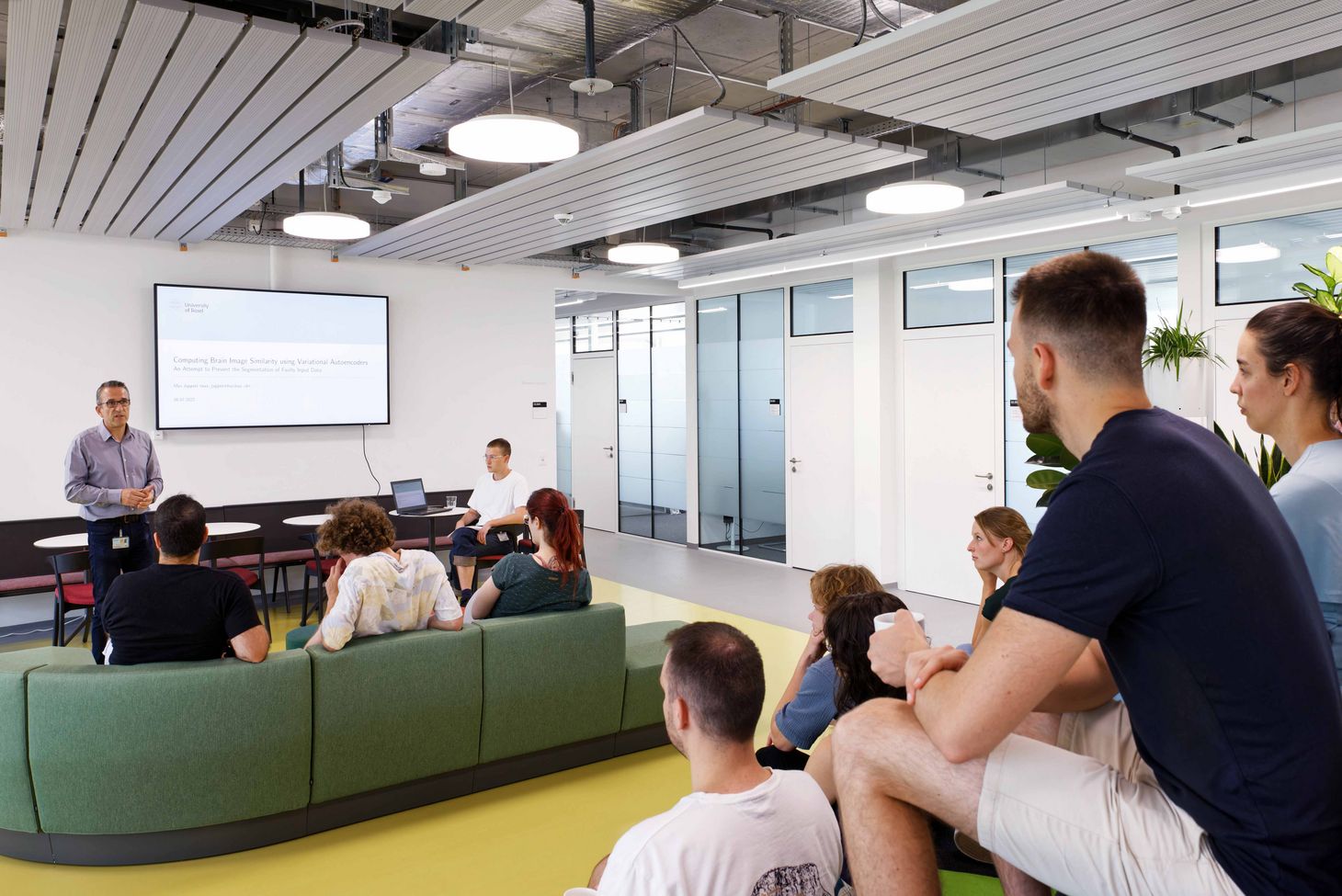
Coffee machine encounters
At their previous facilities, the various groups in the department and project were spread over two floors and contact was infrequent. “Today we’re all on the same floor,” says Cattin, “and we intentionally have just one coffee machine for around 120 researchers.” What sounds like a trifling matter is, in Cattin’s opinion, an important issue: people meet when they drink coffee. But only if they go to the same coffee machine.
At the back of the lounge, two rows of step-seating face a large screen mounted on the front wall. “We also hold meetings here,” says Cattin. The open space is strategic—even during presentations, anyone can enter the kitchen and get tea or coffee. “I always watch to see if people just pass by, or if they stay and listen,” says Cattin, who is always delighted when the latter occurs.
Although the Department of Biomedical Engineering moved into the facilities only a few months ago, Cattin is already seeing signs of greater cohesion in the team. For instance, a dozen researchers in his group recently rented a holiday house on Lake Como to spend a long weekend. And some groups complained that many students spoke Swiss German together in the lounge instead of English. “That shows contact and conversations are important to our employees,” Cattin is convinced.
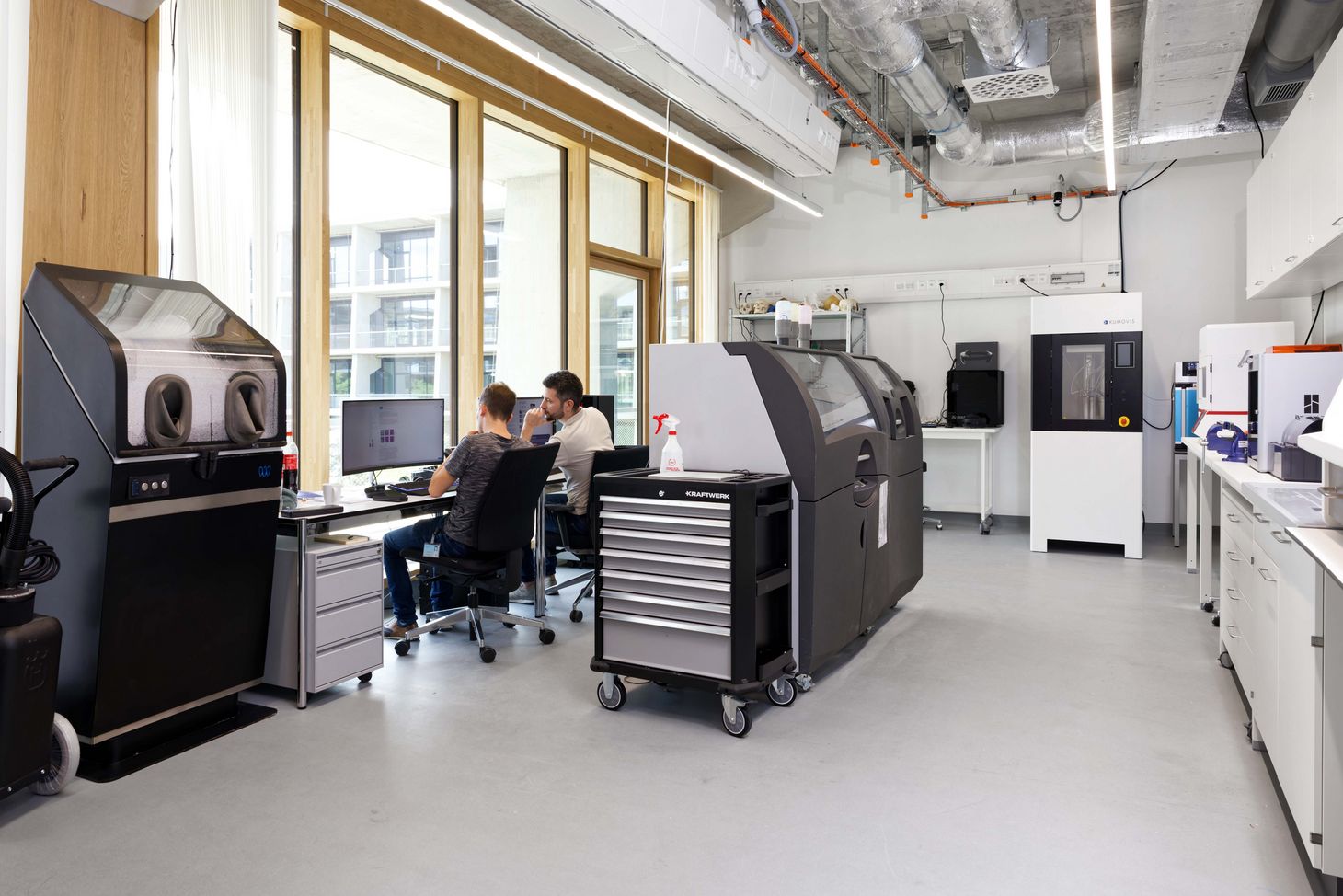
Brainstorming on wall-size whiteboards
But much work is also being done in the new light-filled rooms and modern workspaces. In addition to three large meeting rooms, the facility has five soundproof meeting-boxes equipped with screens and whiteboards where a group can speak without disturbing other colleagues. Graduate students in Biomedical Engineering attend lectures and courses in the lecture theatre and practical training rooms.
Whiteboards are ubiquitous in the new building. In fact, they make up entire walls waiting to be written on with special markers and wiped clean again—a clear invitation to discuss and brainstorm anywhere, anytime. The wall at the department entrance, also one large whiteboard, currently features the word “Welcome” in various languages. But here, too, Philippe Cattin has grander plans: “The idea is to build a robot that hangs on the wall and writes messages like personalised greetings to our guests,” he says.
Making miracles one step at a time
On the left of the entry door is a room containing a glassed-off area with a skeleton lying beneath a robot arm. It’s a demo room that, in future, will display the various generations of the MIRACLE prototypes, documenting how the project has evolved over time. “Our aim is to show that miracles don’t happen overnight,” Cattin says.
In the rooms next door, the researchers are working on the actual miracle, specifically the MIRACLE robot-guided laser scalpel for bone surgery. The labs of the four MIRACLE groups are practically side by side. In one, Philippe Cattin’s planning and navigation group develops virtual reality systems for planning and monitoring operations. In the robotics lab, Georg Rauter’s team work on robotic techniques to steer the operation equipment inside a patient’s body. In the laser and optics lab, Ferda Canbaz and her researchers develop laser systems for high-precision bone cutting. And in the smart implants lab, Florian Thieringer’s group fabricate 3D-printed, patient-specific bone implants.
One large room still stands empty—a space for two modern operating theatres. Despite not belonging to the MIRACLE project, the rooms will still be of great value to the group thanks to the surgeons who will work there, as Cattin explains: “When we want to know whether a newly developed application is useful for medical practitioners, we can just stop by and ask” Indeed, proximity, personal encounters and daily discussions are all key to accelerating MIRACLE innovations.
